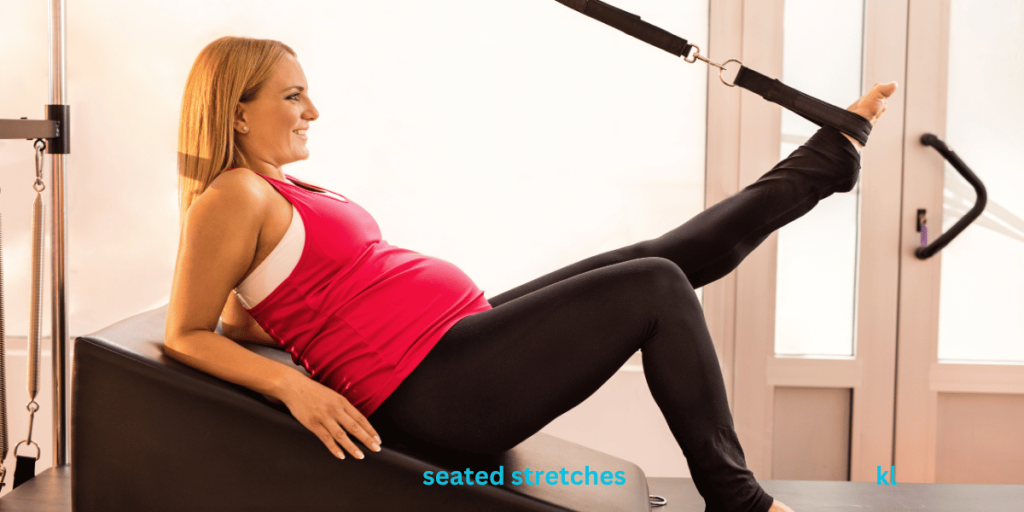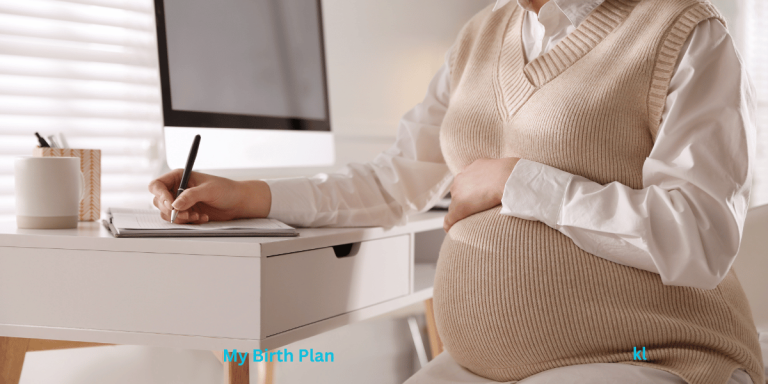Pregnancy is a beautiful journey, but let’s be honest—it comes with its fair share of discomforts. Whether you’re in the early weeks or counting down to your due date, understanding how to manage these discomforts can make all the difference.
According to Researchgate, some of the top reported discomforts are fatigue, nausea-vomiting, heartburn, back pains, and breast tenderness. The good news? With a little preparation and the right tips, you can minimize these discomforts and enjoy a smoother pregnancy.
Let’s dive into Managing Pregnancy Discomfort: Effective Tips for Each Stage, so you feel as comfortable as possible through your pregnancy journey.
First Trimester: Coping with Early Discomfort
The first trimester is when fetal development is at full speed.—your body is working overtime to create new life, and with that comes a slew of early pregnancy symptoms.
Morning sickness can hit at any time of the day (who named it “morning” sickness anyway?). To combat it, try natural nausea remedies like ginger tea or small sips of lemon water. Snacking on plain crackers or almonds before getting out of bed can also help settle your stomach.
And if you’re like me, you might find relief in peppermint or even aromatherapy with a light citrus scent: Guess where I got this secret from? my pregnancy books did magic for me!
Fatigue during the first trimester can feel like you’ve been hit by a truck. Your body’s busy building the placenta, which takes a massive amount of energy. I learned the hard way that fighting this exhaustion is a losing battle—listening to your body is key.
Nap when you can, but also focus on boosting pregnancy energy levels through gentle activities like short walks or light stretching. These aren’t just for physical health but are great for mental clarity too.
And then there’s breast tenderness, which no one warns you about until it hits. Wearing a supportive, comfortable bra (even a sports bra at night) can be a game-changer. This small adjustment helps alleviate the daily ache and keeps you from wincing every time you brush past a doorframe.
Dealing with round ligament pain—those sudden, sharp pulls in your abdomen—can be especially unnerving if you’re not prepared for it. This pain often comes as your uterus begins to expand.
Simple, gentle stretches or yoga poses, like cat-cow, can help release some of that tension. Also, avoid arching your back too much when sitting or standing. Over time, you’ll figure out which movements help relieve it without straining your body.

Hydration and balanced nutrition are absolute musts. You’re not just eating for two in terms of calories; you’re eating for nutrients. Prioritizing prenatal essential nutrient guidelines, like choosing meals rich in folate, calcium, and iron.
And also taking your prenatal vitamins will set a strong foundation for your baby’s development and help manage your symptoms.
If food aversions make this tough (trust me, I couldn’t look at chicken for weeks!), try cold smoothies packed with greens and fruits. They’re easier to sip than force-feeding a solid meal when your appetite is off.
When it comes to pregnancy self-care practices, I swear by a few essentials: light prenatal yoga, mindful breathing exercises, and warm (but not hot!) baths to soothe tired muscles and calm the mind.
I learned to embrace the slow pace and treat the first trimester as a time to adapt and nurture myself. First-trimester discomfort management isn’t about pushing through—it’s about finding little ways to feel good and practicing gentle self-compassion.
Second Trimester: Maintaining Comfort as the Baby Grows
By the second trimester, you’re probably starting to feel a bit more like yourself. The early nausea and fatigue from the first trimester may be easing, and now it’s time to focus on maintaining comfort as your baby grows.
One of the most common discomforts in the second trimester is lower back pain. As your belly expands, your center of gravity shifts, which can put a strain on your back.
Incorporating exercises that support your lower back and improve posture can do wonders. Simple backache treatment options like pelvic tilts, gentle stretches, and strengthening exercises for your core can help stabilize your pelvis and alleviate pressure on your spine.
I loved doing modified squats and even some wall sits. These moves, although simple, kept my back from feeling achy and supported my posture as my belly grew.
If you’ve noticed swelling in your legs or feet, you’re not alone. Pregnancy increases blood flow and fluid retention, so it’s totally normal. However, managing swelling and vein reduction is key to avoiding discomfort or complications.
Elevating your feet whenever possible (even while sitting) can help reduce swelling, and wearing supportive compression socks can aid circulation.

Also, try walking or doing light stretches throughout the day—pregnancy exercise benefits go beyond just keeping you fit; they can also keep fluid from pooling in your legs.
Again, round ligament pain can also make an appearance during this time, especially when you move suddenly. The good news? You can relieve it with some specific exercises.
Prenatal yoga poses like the “cat-cow” and “child’s pose” can stretch and release the ligaments that support your growing uterus. Another one I loved was the “squat to chair” pose, which really opened up my hips and gave me some much-needed relief.
Prenatal yoga poses and breathing techniques are fantastic ways to improve flexibility, especially as your body adjusts in the second trimester.
One pose that was a lifesaver for me was the “seated forward fold”—it’s great for stretching your back, hamstrings, and hips. Stretching and deep breathing also help regulate your mood, as pregnancy hormones can sometimes make emotions feel like a rollercoaster ride.
And don’t forget hydration! Drink plenty of water to help with swelling, skin health, and just general well-being. Sometimes, when I’d get busy during the day, I’d forget to drink enough water, and I’d feel bloated and sluggish.
But making sure to hydrate consistently (with some fresh lemon or cucumber for flavor) always helped me feel more balanced.
Third Trimester: Easing Late-Stage Aches and Pains
The third trimester is here, and with it comes a whole new set of challenges. As your body prepares for labor, you might feel those late-stage aches and pains intensifying.
From hip discomfort to sciatica, the pressure on your joints and muscles can become overwhelming. But don’t worry—there are plenty of ways to ease these discomforts and set yourself up for a more comfortable, smoother labor.
One of the biggest discomforts in the third trimester is pelvic pain. As your baby grows, it puts more pressure on your pelvis and lower back, often causing aches and discomfort.
Hip-opening stretches and pelvic tilts can be a game-changer here. Hip-opening stretches, like the “butterfly” pose or the “figure-four” stretch, work wonders for releasing tension in the hips and pelvis.

It’s crazy how much better I felt after incorporating these stretches into my routine. Pelvic tilts are another great way to reduce pressure on the lower back and ease pelvic pain.
The best part? These exercises are simple, can be done daily, and don’t require any equipment.
Sciatica is another common issue in the third trimester. The growing uterus can put pressure on the sciatic nerve, causing shooting pain down your leg.
Sciatica treatment methods, like gentle stretches and exercises, can help alleviate this. I found that a mix of seated stretches (think “seated hamstring stretch”) and standing stretches (like the “standing figure-four stretch”) really helped me relieve the discomfort.
Additionally, techniques for reducing sciatica pain, such as applying heat or using a supportive pillow while sleeping, can work wonders. Never underestimate the power of a good cushion to support your body during the night!

Speaking of sleep—let’s talk about it. At this point, getting a good night’s rest can feel like an impossible task. Your growing belly and the pressure on your back and hips may make finding a comfortable sleeping position tricky.
But trust me, a little support can go a long way. Use a pregnancy pillow to support your body and keep your spine in alignment while you sleep. I always propped myself up with a pillow between my knees to relieve some of the pressure on my hips.
For the best sleep, try to lie on your left side (it improves circulation to both you and the baby) and keep your knees slightly bent.
Braxton Hicks contractions, those practice contractions that prepare your body for labor, can also intensify in the third trimester. Soothing Braxton Hicks contractions involves staying hydrated, using relaxation techniques such as deep breathing, soothing activities like enjoyable music, and adjusting your activity level.
If you feel tightness in your belly, it might be because you’ve overdone it—take a break, drink some water, and try to relax.
Heartburn is another common issue, as the baby presses against your stomach. Heartburn reduction strategies include eating smaller, more frequent meals, avoiding spicy or fatty foods, and propping yourself up with pillows if you’re having trouble at night.
Taking prenatal vitamins with food can also help reduce heartburn and improve nutrient absorption, ensuring that essential vitamins and minerals, such as iron and folic acid, are more gentle on your stomach.
I found that sipping ginger tea or eating almonds helped ease heartburn when it hit, so keep those remedies in your back pocket!
Beyond physical discomfort, the third trimester can bring mood swings as your body adjusts to the final stage of pregnancy. Pregnancy mood swing support is important—take it easy on yourself, try to stay relaxed, and lean on your support system when needed.
Feeling overwhelmed is normal, but be rest assured that this stage won’t last forever.
As your due date nears, focusing on labor preparation exercises is crucial. These exercises don’t just strengthen your body; they also help you stay mentally prepared for what’s to come.
Gentle squats, pelvic floor exercises, and breathing techniques will help you build stamina and ease into labor when the time comes.
Using Prenatal Equipment for Added Comfort
Whether you’re dealing with back pain, pelvic discomfort, or trying to find relief from fatigue, using the right prenatal equipment can be a game-changer.
Not only does it make your workouts safer and more comfortable, but it can also provide relief for those pesky pregnancy symptoms that show up during each trimester.
Stability balls are one of the best tools to add to your pregnancy workout routine. I can’t tell you how many times I leaned on mine for gentle backache treatment options.
Sitting on a stability ball while doing light stretches or prenatal yoga poses helps improve your posture and strengthens your core without adding too much pressure to your back or hips.

The ball’s natural instability activates muscles you might not use otherwise, promoting stability and balance, which is especially useful as your center of gravity shifts. Plus, it can be a lifesaver during labor! Some women even use the ball during contractions to ease the pain.
Another great piece of supportive prenatal equipment is the resistance band. These versatile bands are perfect for pregnancy workouts, allowing you to perform low-impact exercises that target different muscle groups, including your arms, legs, and core.
Resistance bands are great for maintaining strength without putting too much strain on your body, and they’re adjustable, so you can modify the intensity of your exercises as your pregnancy progresses.
Incorporating resistance band exercises into your routine helps keep your muscles engaged and supports pelvic pain relief when you’re feeling sore.
The belly band is another great supportive garment that wraps around the lower abdomen and pelvis. It’s designed to relieve some of the pressure on the back and belly.
As the belly grows, the body’s center of gravity shifts, often causing back pain and sciatica. A belly band provides support by redistributing some of the weight and pressure away from the lower back and hips, making it easier to stand or walk without discomfort.

Pregnancy pillows are a must-have for anyone struggling with sleep or needing extra support while lounging during the day. A pregnancy pillow is designed to help align your body, easing the pressure on your back, hips, and pelvis.
Using it at night can help reduce pelvic pain and relieve any discomfort that comes from lying on your side for extended periods. I found mine incredibly helpful when dealing with round ligament pain—it provided extra support for my growing belly, making it easier to sleep without constantly tossing and turning.
Ultimately, using the right prenatal equipment is all about supporting your body and adapting to its changing needs. With the right tools, you can stay active, manage discomfort, and find relief in ways that work best for you.
Whether you’re looking for pelvic pain relief tools or seeking to add some extra comfort during your workouts, these items are worth investing in for a smoother pregnancy experience.
When to Consult a Healthcare Provider About Pain or Discomfort
If you’re dealing with persistent pain that doesn’t improve after a good rest, it’s definitely worth reaching out to your OB/GYN. For example, if you’re dealing with pregnancy headaches that won’t go away, it’s not something to ignore.
Headaches can be triggered by several things, including dehydration or even stress, but if they’re persistent or accompanied by other symptoms like visual changes or nausea, they could indicate something more serious, such as gestational hypertension.
Communicating with your healthcare provider about these concerns is crucial.
Any abnormal pain, like pelvic pressure that feels like it’s increasing or constant, or if you’re experiencing Braxton Hicks contractions more frequently, should be evaluated to make sure everything is progressing as it should.
In some cases, what feels like round ligament pain could be something else, so don’t hesitate to ask if you’re unsure. A simple check-in with your healthcare provider can offer peace of mind.
Reaching Out to Support Resources
Expecting mothers also need emotional support and community resources. If you’re unsure where to go for help or how to navigate discomforts, don’t be afraid to ask your doctor for recommendations on local pregnancy specialists or online communities.
Sometimes, just hearing from other moms who’ve been through similar experiences can make all the difference in easing those worries.
Remember, taking care of yourself is not just about managing discomfort—it’s also about knowing when to take a step back, ask for help, and give your body the rest it needs.
Don’t hesitate to reach out to your healthcare provider when things don’t feel quite right. After all, you’re building a little life inside you, and you deserve to feel supported every step of the way!







